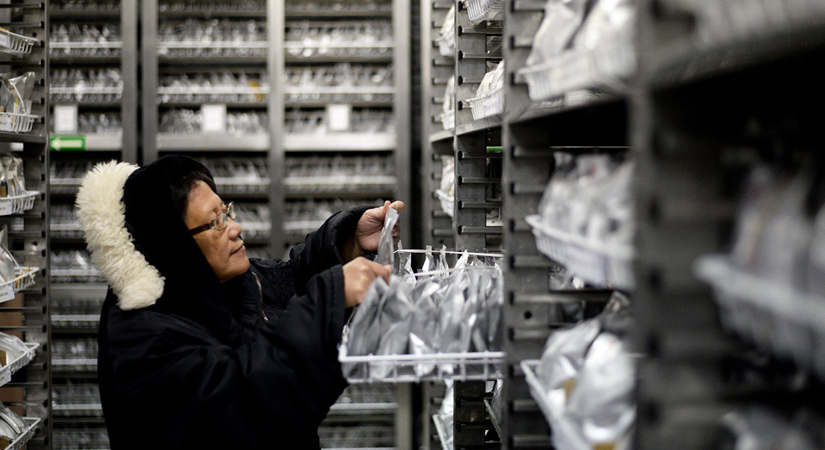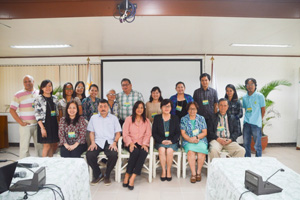Maria Eloisa I. Calderon

JOSE Ildefonso U. Rubrico reached for a small box on his desk and opened it to reveal what looked like a miniature model of a car chassis — bare with red, yellow and blue electrical wires sticking out of its belly.
The thing had a pair of eyes and wheel for its legs.
It’s a robot and Mr. Rubrico, an AI (artificial intelligence) scientist previously based in the University of Tokyo, designed it.
“When a child hugs a robot to say goodbye, like it was alive, squeezing it tight — as if it were a real pet — wires and all, you know you’ve done your part,” Mr. Rubrico said during a Feb. 3 interview in his laboratory at the University of the Philippines (UP) in Diliman.
His was a narrative of a Filipino scientist who delivered a lecture before grade school students in the outskirts of Quezon City as part of his new job under the “Balik Scientist” program.
That program by the Philippine government is ambitious, if viewed as equivalent to a repatriation of Filipino scientists who left the country to become immigrants elsewhere and who are sorely needed by an economy that has been reporting stellar performance quarter after quarter but lacking the manufacturing and heavy industries that grease its regional peers China, Thailand and Singapore.
Last month, a bicameral committee of Congress appeared to be a monolith of pro-scientists so that a proposal to turn the Marcos era-authored “Balik Scientist” program into a law that grants more incentives to this cohort of geniuses was nodded through without much drama.
“It [deliberation] was very cordial, nothing very controversial,” Senator Paolo Benigno “Bam” Aquino IV, chairman of the Senate Committee on Science and Technology who made the passage of the bill a keystone of his career, told BusinessWorld.
“Finally, we can institutionalize the program already. By April or May this should be effective already,” he said, referring to the ratification into law that concludes with the President’s signature.
Counted among the incentives are a daily subsistence allowance of $150, economy airfare tickets, duty-free importation of professional instruments and donations, and a research subsidy of up to P2 million for projects under the Department of Science and Technology (DoST).
That kind of package the Philippines offers could mean the Filipino scientist from Silicon Valley, for instance, ideally has made a name for himself enough to forget about the pay cut and return home.
“The requirements for Balik Scientists are kinda steep. Di siya madali maging Balik Scientist (It’s not easy to become a Balik Scientist),” DoST Undersecretary for Research and Development Rowena Cristina L. Guevara said in a February interview in her office at the agency’s headquarters in Bicutan.
“Ang tawag namin sa Balik Scientist, Balik Puso (We call them the scientists returning with their heart). They come not because of the payment but because they would like to contribute… So the money, none of them ever brought that up.”
Mr. Rubrico, a doctoral degree holder in engineering from the University of Tokyo who had been toying with robotics for the past 21 years, is one of them.
“We are targeting specific Balik Scientists like Joe Rubrico. He is an expert on AI and we are embarking on a big AI program,” the DoST official pointed out.
Data from the DoST showed the four-decades old program attracted 204 experts between 2007 and 2017, or an average of 20 scientists per year, with a ratio of two males for every female.
More than two-thirds of them, or 143, were from North America, while the rest were accounted for by scientists from Asia (26), Europe (18), Australia (16), and Africa (one).
From 1975 to 2006, the program recorded 307 “engagements” or the number of times a scientist — which could be a repeater — was enlisted.
They specialize in various engineering, chemistry, physics, architecture and medical fields, with recent recruits being petroleum geologists, nuclear chemical and uranium analysts, oceanographic engineers, climate change and earth and space scientists, HIV researchers and robotics engineers.
ADDRESSING RESTRICTIONS
The “Balik Scientist” can be a foreigner.
The bicameral committee-approved “Balik Scientist” measure — yet to be signed by President Rodrigo R. Duterte into law — defines the “Balik Scientist” as “a science & technology expert or professional, as certified by the DoST, who is a Filipino citizen or a foreigner of Filipino descent, accorded with benefits and incentives under this Act to undertake science and technology activities along his or her field of expertise…”
With that wording, clearances were squared away: They do not need to get a license from the Professional Regulation Commission (PRC), the agency that says who should practice what profession.
The practice of professions in the fields of engineering, medicine and sciences in the Philippines has been, in the past, limited to Filipino nationals, as dictated by the Foreign Investment Negative List (FINL) that is set through a Malacañang-issued Executive Order usually every two years.
The last time an FINL — the 10th in a series — was issued was on May 29, 2015 when then President Benigno S.C. Aquino III dropped engineering, medicine, chemistry, geology and architecture from the roster, effectively allowing foreigners to practice them here.
That was three years ago so that a new negative list is long overdue.
“The FINL is much broader and we are liberalizing quite a bit of it,” Socioeconomic Planning Secretary Ernesto M. Pernia said in a telephone interview.
“We also want to liberalize those who require licensure examinations. In a way that’s related, it is supportive of the liberalization of the FINL,” he said, referring to the proposed “Balik Scientist Act” which is one of the priority legislations of the Duterte government.
“The revised FINL, which is going to be the 11th, is up for NEDA board approval.”
The enactment of the “Balik Scientist Act” and the release of an updated FINL will be a dovetailing of two key measures that open up the Philippine economy to more scientists — foreigners included.
But to make them stay in the country for good, there are loose ends that need to be properly tied up.
Scientists under the program have terms of engagement running from 15 days to three years, at best.
Filipinos who opted to become an American, Australian or of any citizenship other than being a Filipino – not dual citizens — can’t be granted permanent jobs here.
“It [Balik Scientist Act] will not address the concern that they will be working here permanently,” Senator Aquino said.
“But this addresses the concern of enticing individuals of Filipino descent to come back and share their expertise with the rest of the country.”
As it is now, the dealings between the Philippine government and the returning scientist under the “Balik Scientist Act” appear to be contractual in nature.
But these scientists generally come more from the academe too — than from industries — and have PhD, something that Philippine universities could benefit from if tapped with farsighted policies.
Several quarters from foreign business chambers have long been seeking changes to the FINL and its backbone, the Philippine Constitution — which among others imposes a 40% foreign ownership limit in educational institutions – saying relaxed rules could give the country a Harvard-like university of sorts.
For now, returning scientists like Mr. Rubrico would have to look beyond the “Balik Scientist” program if they opt for a permanent job here and retire in their homeland. He’s certain to get a university post, but foreign scientists who hope to get a fair shake from Philippine universities won’t feel as secure.
“There is such a thing called ‘Balik PhD’ but only in UP, if you really want to go back to teaching. They are encouraging PhDs to come back to the country and teach,” Mr. Rubrico said.
“Kelangang Pilipino ka (You have to be a Filipino)… siguro that’s the point na pinapapili ka kung anong gusto mo talaga (perhaps that’s the point when you are asked to choose between keeping your foreign citizenship or renouncing it).”
The “Balik Scientist Act” grants as a privilege the “exemption from renouncing their oath of allegiance to the country where they took the oath,” but there’s a caveat that reads “unless the balik scientist after the service decides to repatriate and retain the government position, as applicable.”
Asked whether he could sponsor a separate bill giving foreigners or former Filipino citizens more flexibility in terms of tenure, lawmaker Mr. Aquino replied: “We already allowed the dual citizenship so I’ll have to see why they wouldn’t want to go for a dual citizenship, but we can take a look at those provisions because if I’m not mistaken those provisions are rather old already.”
Those betting on a massive repatriation of scientists — to, as the new law worded it, “accelerate the development of new or strategically important technologies that are vital to our national development and progress” — would have to temper expectations.
The “Balik Scientist Act” alone, while a good step, won’t be enough to bring them all home.
DoST’s Ms. Guevara summed up the challenge: “One time we went to Japan — there were 50 scientists there and engineers.”
“Sabi ko, if may 50 na audience, may isang babalik, puede na. (I told myself: From an audience of 50, if there’s one who’d come back, that would be good enough for me.)”






